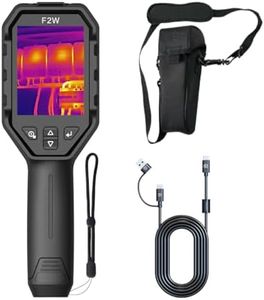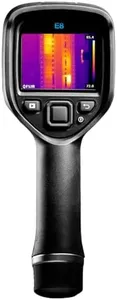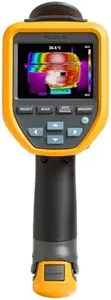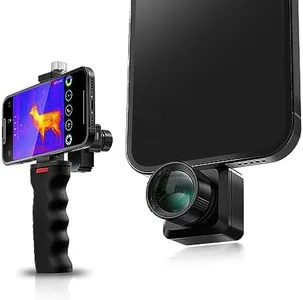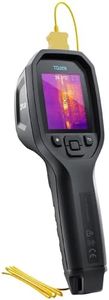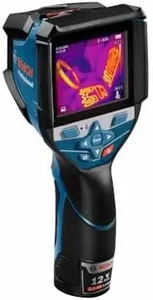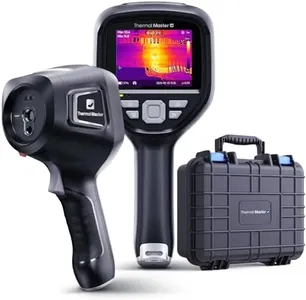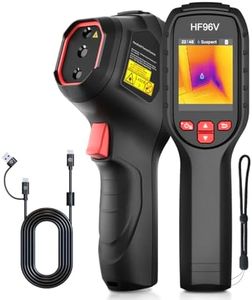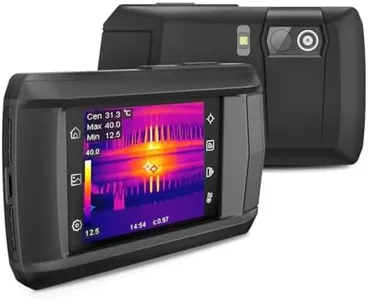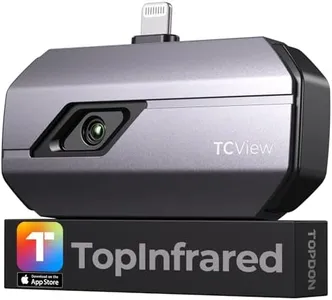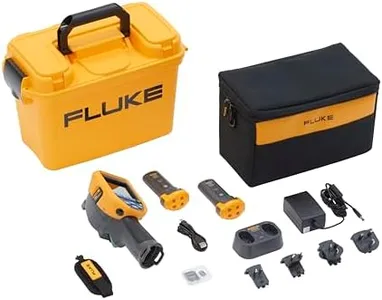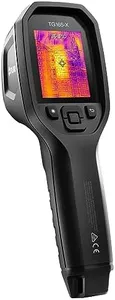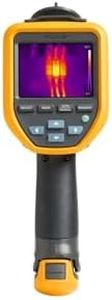Top 10 Thermal Cameras Deals Right Now
FLIR E8-XT - Commercial Thermal Imaging Camera with WiFi. High Resolution Infrared Camera Ignite Cloud
Great Choice
Our technology thoroughly searches through the online shopping world, reviewing hundreds of sites. We then process and analyze this information, updating in real-time to bring you the latest top-rated products. This way, you always get the best and most current options available.

Our Top Picks
FLIR E8-XT - Commercial Thermal Imaging Camera with WiFi. High Resolution Infrared Camera Ignite Cloud
The FLIR E8-XT is a handheld thermal camera designed for commercial and outdoor use, offering a solid resolution of 320 × 240 pixels. This provides clear thermal images that help you quickly spot temperature differences and hidden issues. It features patented MSX technology, which overlays visible details over the thermal image, making it easier to understand what you’re looking at without needing expert interpretation. The camera covers a wide temperature range from -20°C to 550°C (-4°F to 1022°F), suitable for many industrial and maintenance tasks.
Its wireless connectivity via WiFi and Bluetooth allows easy image sharing and cloud storage through the FLIR Ignite app, streamlining workflow and reducing manual file handling. Battery life is decent, powered by a rechargeable lithium-ion battery, making it portable enough for fieldwork. The device weighs around 1.3 pounds and is built with an IP54 rating, meaning it can handle some dust and water splashes, though it’s not fully rugged for harsh environments. While the 320 × 240 resolution is good for many uses, higher-end models offer better detail if you require very precise imaging.
The FLIR E8-XT balances user-friendly features with reliable performance, making it a practical choice for professionals needing quick diagnostics, maintenance checks, and outdoor security inspections without overwhelming complexity.
Great Choice
Fluke TiS75+ 27HZ, Thermal Imager
The Fluke TiS75+ 27HZ thermal imager stands out due to its rugged build and reliability, essential for professionals in demanding environments. It has an IP54 rating, making it resistant to water and dust, and it can withstand drops from up to 2 meters. This durability ensures that it remains functional even in tough working conditions.
The camera's thermal sensitivity (NETD), resolution, and wide temperature range enhance its capability to detect and diagnose issues accurately, making it suitable for proactive maintenance programs. Its field of view and image refresh rate are designed to provide clear and detailed thermal images, which are crucial for precise inspections. The asset tagging and voice annotation features allow users to organize and document their inspections efficiently, saving time and increasing productivity.
At 7.55 pounds, it is relatively heavy, which might be cumbersome for prolonged use. While its modern design and interface make it user-friendly, the premium price point may be a consideration for budget-conscious buyers. The Fluke TiS75+ is best suited for professionals who need a reliable, durable, and feature-rich thermal camera for accurate and efficient maintenance inspections.
InfiRay Thermal Monocular for iPhone, T2 Pro Thermal Camera Scope for Hunting, 256x192 IR Resolution Thermal Imaging Goggles, 800 Yards Rang Thermal Vision
Most important from
31 reviews
The InfiRay T2 Pro Thermal Monocular is a solid choice for hunters and outdoor enthusiasts who want to spot animals at a distance using their iPhone as a display. It offers a 256x192 infrared resolution, which delivers clear thermal images, and a smooth 25Hz refresh rate that helps track moving targets without lag. With zoom options from 2x to 16x and a range of up to 800 yards, it’s well-suited for spotting wildlife like deer or wild boars from far away.
The device connects easily to your iPhone, allowing a larger screen view and controlling it via a simple app, which makes it user-friendly even if you’re not tech-savvy. Battery life depends on your phone but generally provides 8-10 hours of use, enough for a full day outdoors. You can record videos or take pictures in six different image modes, which is great for capturing your hunting experience.
The product features a portable build and includes a stand for stability. If you want a quick, easy-to-use thermal scope that pairs with your iPhone and covers basic hunting needs, the InfiRay T2 Pro is worth considering, especially given its reasonable size and good zoom capabilities.
